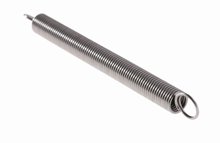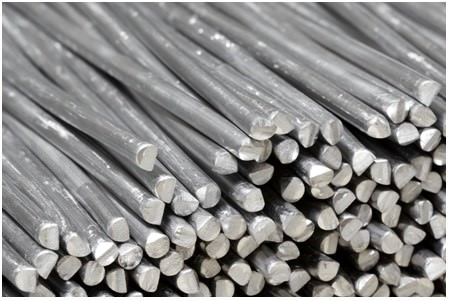How springs work
Contents |
[edit] Introduction
Springs are an incredible feat of engineering, and life would not be quite the same without them. Used in the vast majority of products and technology we use in day-to-day life, springs are relatively simple, but how do they work?
[edit] How does a spring operate?
As a spring’s wire is bent, energy will be used in the process, some of which will be stored within the spring. When energy is stored within a spring, it is referred to as being ‘prestressed’. As the spring is wound more and more, it becomes far easier to squeeze and stretch the material because the atoms found in the material are being moved out of their usual position, making the material more receptive to manipulation.
Springs are fantastic at storing and absorbing energy. That is why the tighter a spring is, the more energy is required to move it – although it is worth noting that once the energy has been expended in order to deform the spring, this energy is not lost, it is stored as potential energy within the spring. Essentially, this means that when the tightly-coiled spring is next released, the energy that was used to coil up the spring will be released.
The best way to think of the whole process is outlined in Robert Hooke’s 1678 book ‘Lectures de Potentia Restitutiva', or 'Of Spring Explaining the Power of Springing Bodies‘. Hooke states that the more a spring is stretched, the longer it gets, the more work has to be done, and the more energy it stores.
Springs are made of a wide range of materials – the most common of which are steel alloys - although the following materials can also be used to create springs:
[edit] What type of springs are available?
Currently, there are three main types of springs available on the market, they are:
- Extension – extension springs have touching coils, allowing them to separate when pulled apart, which makes them stretch, e.g. as used in trampolines.
- Compression – commonly used in mattresses, compression springs work in the opposite way to that of extension springs. The spaces between each coil allow the spring to absorb energy when it is pushed together by an external force.
- Torsion – designed to allow each coil to twist tighter together when a force is applied, torsion springs are often referred to as ‘pop-up’ springs. Torsion springs are commonly used in digital cameras and CD players.
[edit] Related articles on Designing Buildings Wiki
- Clock springs.
- Compression springs.
- Compression vs wave springs.
- Constant force springs.
- Die springs.
- E-springs.
- Extension springs.
- Flat springs.
- Gas springs.
- Key qualities of springs.
- Large and hot coiled compression springs.
- Lockable gas springs.
- Spring materials.
- Springs in structures.
- Tension springs v torsion springs.
- Tension springs.
- The Difference Between Tension and Torsion Springs.
- The Uses of Wire Forms Within the Construction Industry.
- Torsion springs.
- Using springs in construction to prevent disaster.
- Wave springs.
Featured articles and news
The UK’s largest air pollution campaign.
Future Homes Standard, now includes solar, but what else?
Will the new standard, due to in the Autumn, go far enough in terms of performance ?
BSRIA Briefing: Cleaner Air, Better tomorrow
A look back at issues relating to inside and outside air quality, discussed during the BSRIA briefing in 2023.
Restoring Abbotsford's hothouse
Bringing the writer Walter Scott's garden to life.
Reflections on the spending review with CIAT.
Retired firefighter cycles world to raise Grenfell funds
Leaving on 14 June 2025 Stephen will raise money for youth and schools through the Grenfell Foundation.
Key points for construction at a glance with industry reactions.
Functionality, visibility and sustainability
The simpler approach to specification.
Architects, architecture, buildings, and inspiration in film
The close ties between makers and the movies, with our long list of suggested viewing.
SELECT three-point plan for action issued to MSPs
Call for Scottish regulation, green skills and recognition of electrotechnical industry as part of a manifesto for Scottish Parliamentary elections.
UCEM becomes the University of the Built Environment
Major milestone in its 106-year history, follows recent merger with London School of Architecture (LSE).
Professional practical experience for Architects in training
The long process to transform the nature of education and professional practical experience in the Architecture profession following recent reports.
A people-first approach to retrofit
Moving away from the destructive paradigm of fabric-first.
International Electrician Day, 10 June 2025
Celebrating the role of electrical engineers from André-Marie Amperè, today and for the future.
New guide for clients launched at Houses of Parliament
'There has never been a more important time for clients to step up and ...ask the right questions'
The impact of recycled slate tiles
Innovation across the decades.
EPC changes for existing buildings
Changes and their context as the new RdSAP methodology comes into use from 15 June.

























